I am now well into culturing thanks to Jo-Maree’s expert guidance. I am happy to say that it is all coming back to me and I actually feel pretty confident navigating the labyrinthian lab layout and doing routine cell culture.
I also have my own stock of HBVPs in the Stem Cell lab. As you can see they are quite spindly and form little ‘star clusters’ as they grow:
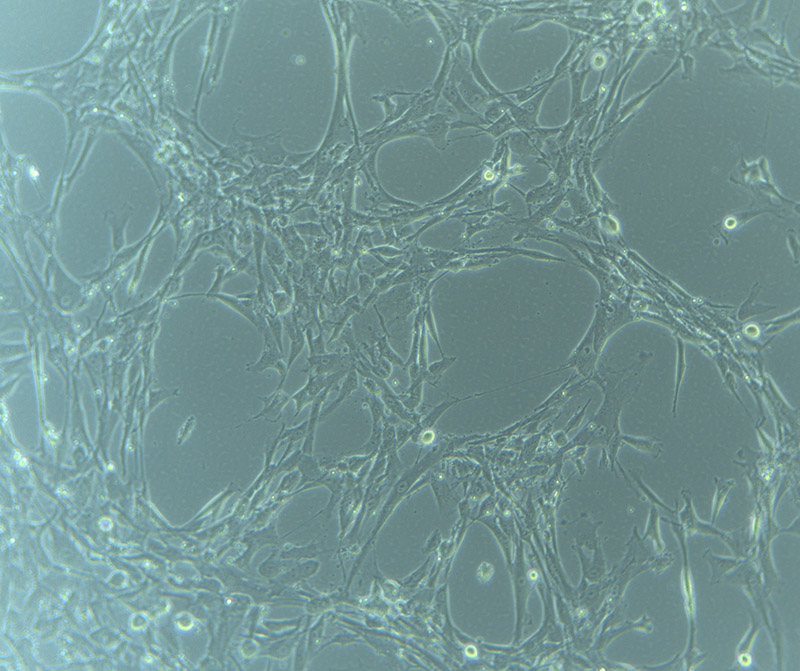
Brightfield Microscope image of HBVP cells (P5 – passage no. 5). These cells were passaged on 9/9/21.
These cells grow in Complete Pericyte Medium (CPM) – Pericyte Medium supplemented with FBS, Antibiotics and Growth Supplements. When keeping a lab journal, it is important to record the Lot no. for all items. This allows researchers to track any variations between batches. It is also vital to record the opening date.
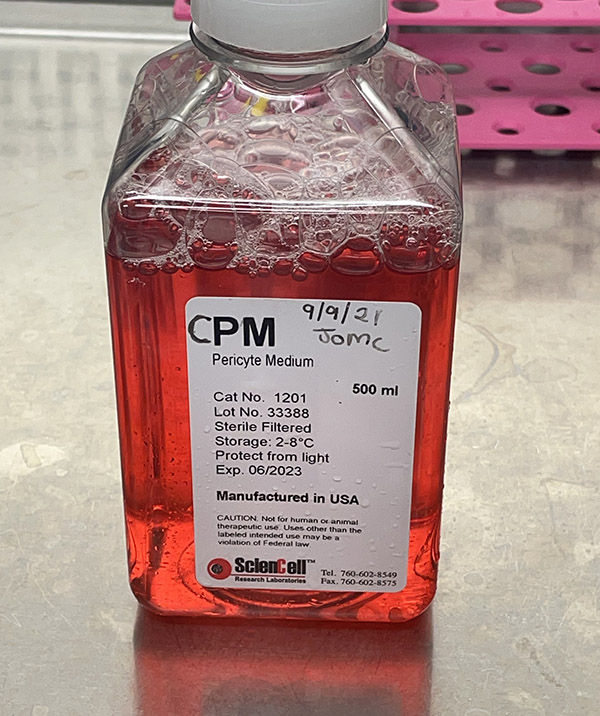
Complete Pericyte Medium – prepared on 9/9/21
The HBVPs grow in standard T75 Tissue Culture flasks in 15mL of CPM (with cell type, passage number, date of passage and researcher initials listed on the vessel).

HBVP cells (P4 – passage 4) in T75 Flask.
As part of the experimentation process, I prepared three 90mm glass Petri dishes.
 I engraved the base of two dishes with a ripple pattern to see if the engraving would impact on the growth/adherence of the cells. Inspired by the awesome work of Whitefeather Hunter (and my previous collaborative work with sigils), one of these dishes also had an engraved symbol to aid protection from accidents.
I engraved the base of two dishes with a ripple pattern to see if the engraving would impact on the growth/adherence of the cells. Inspired by the awesome work of Whitefeather Hunter (and my previous collaborative work with sigils), one of these dishes also had an engraved symbol to aid protection from accidents.
As you can see below, the engraving looks quite rugged and sharp as it was done by hand. I am curious to see if the cells will grow on this area.

Brightfield microscope image of the engraved glass.
To sterilise the dishes for cell culture, they are placed into paper autoclave bags and sealed with autoclave tape. They are then placed into an autoclave that steam sterilises the vessels at high temperature. The black lines on the tape indicate that the process was successful and the correct temperature was reached.
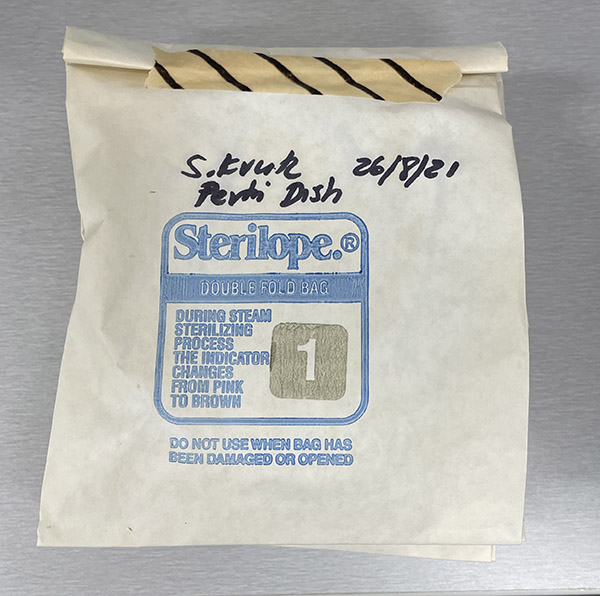
Single Petri dish in autoclave bag – dated 26/8/21
Most cells do not adhere well to untreated plastic or glass surfaces. As such we added a Poly-L-lysine coating to aid cell adherence.

Poly-L-lysine solution.
The Poly-L-lysine solution was diluted with sterile H2O to make up 30mL total (10mL for each Petri Dish).
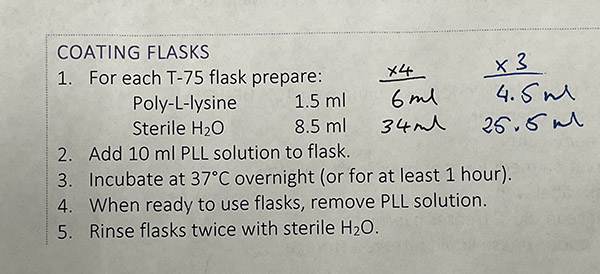
10mL of the Poly-L-lysine solution was added to each dish and then incubated for an hour.
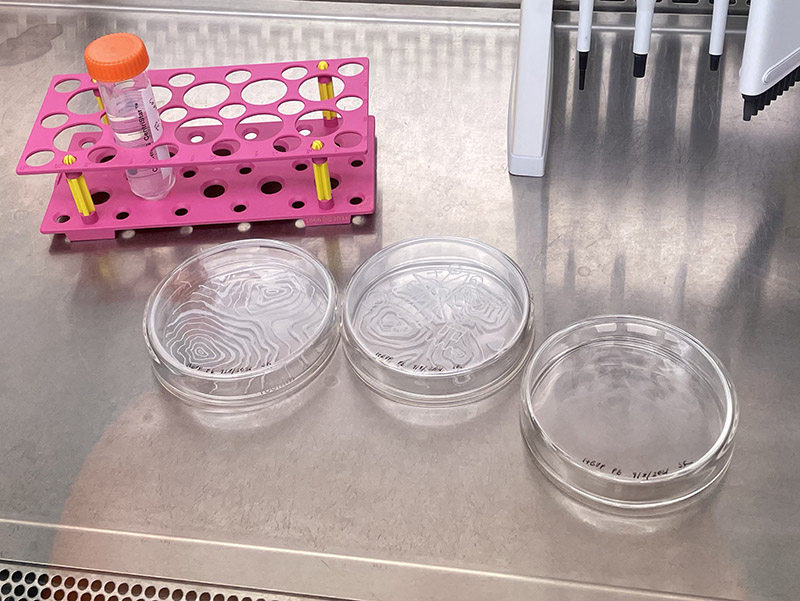
After an hour, I removed the Poly-L-lysine solution and washed each dish twice with sterile H2O. I passaged (split) the HBVPs and added approx 1 million cells (in 1mL media) to each Petri Dish and one T75 Flask (plus 14mL media).
